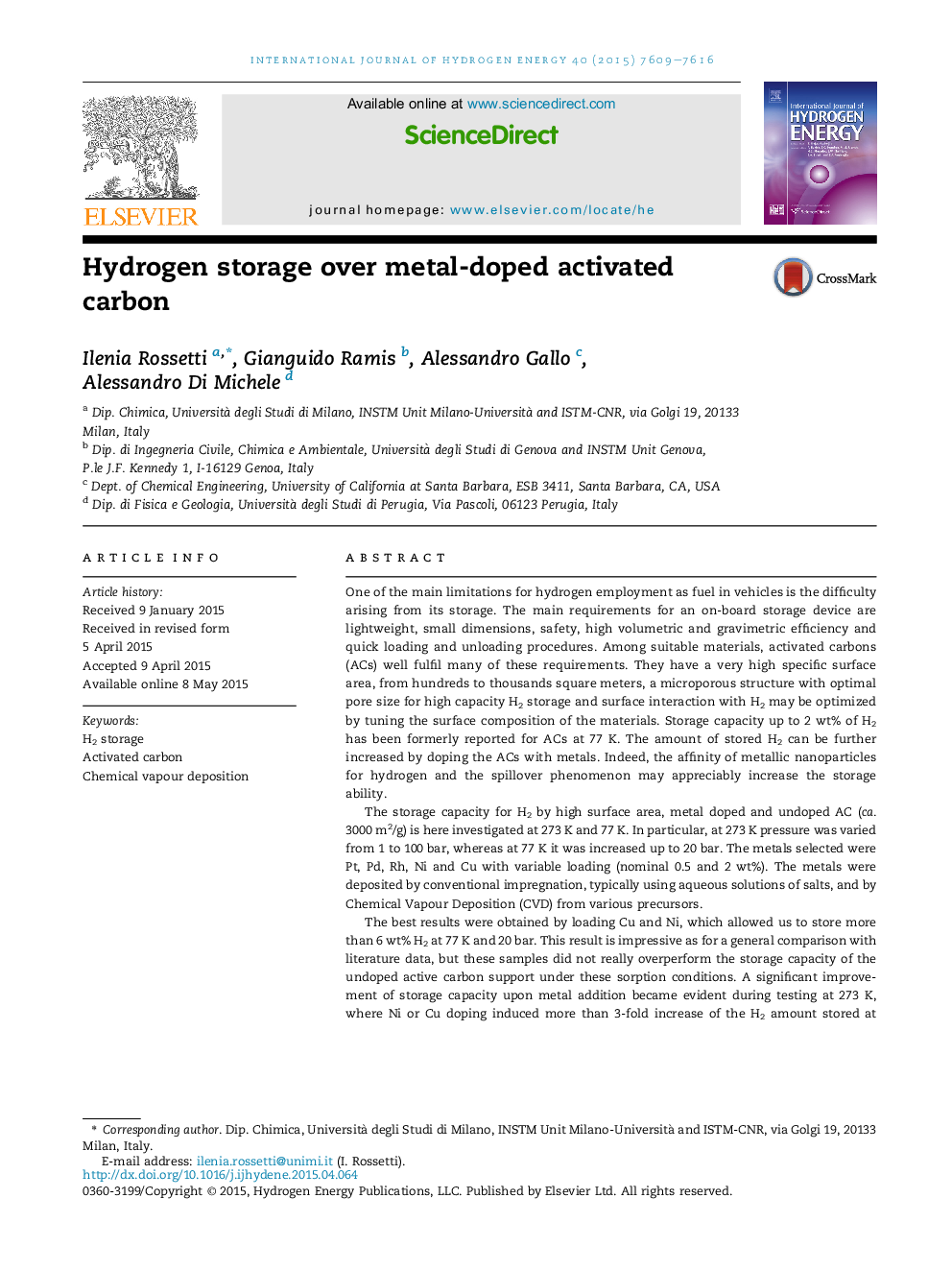| Article ID | Journal | Published Year | Pages | File Type |
|---|---|---|---|---|
| 1279735 | International Journal of Hydrogen Energy | 2015 | 8 Pages |
•Investigation on the effect of hydrogen spillover on metals.•Comparison of different metals to enhance H2 adsorption on active carbon.•Comparison of different metal deposition procedures.•More than 6 wt% H2 at 77 K and 20 bar was achieved.•Metal effect was by far more evident during storage at 273 K.
One of the main limitations for hydrogen employment as fuel in vehicles is the difficulty arising from its storage. The main requirements for an on-board storage device are lightweight, small dimensions, safety, high volumetric and gravimetric efficiency and quick loading and unloading procedures. Among suitable materials, activated carbons (ACs) well fulfil many of these requirements. They have a very high specific surface area, from hundreds to thousands square meters, a microporous structure with optimal pore size for high capacity H2 storage and surface interaction with H2 may be optimized by tuning the surface composition of the materials. Storage capacity up to 2 wt% of H2 has been formerly reported for ACs at 77 K. The amount of stored H2 can be further increased by doping the ACs with metals. Indeed, the affinity of metallic nanoparticles for hydrogen and the spillover phenomenon may appreciably increase the storage ability.The storage capacity for H2 by high surface area, metal doped and undoped AC (ca. 3000 m2/g) is here investigated at 273 K and 77 K. In particular, at 273 K pressure was varied from 1 to 100 bar, whereas at 77 K it was increased up to 20 bar. The metals selected were Pt, Pd, Rh, Ni and Cu with variable loading (nominal 0.5 and 2 wt%). The metals were deposited by conventional impregnation, typically using aqueous solutions of salts, and by Chemical Vapour Deposition (CVD) from various precursors.The best results were obtained by loading Cu and Ni, which allowed us to store more than 6 wt% H2 at 77 K and 20 bar. This result is impressive as for a general comparison with literature data, but these samples did not really overperform the storage capacity of the undoped active carbon support under these sorption conditions. A significant improvement of storage capacity upon metal addition became evident during testing at 273 K, where Ni or Cu doping induced more than 3-fold increase of the H2 amount stored at 100 bar with respect to the bare support. Different dispersion was achieved when varying the metal and preparation method, possibly leading to different sorption performance.
Graphical abstractFigure optionsDownload full-size imageDownload as PowerPoint slide
